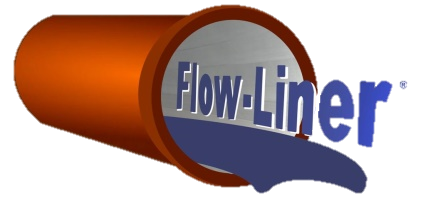For your existing water service line, there is a safe and certified alternative to the old "dig and replace" method. Which one do you want your children drinking from?
Each pipe captured in the images above and below were existing water service lines removed from service, including the Neofit barrier that was removed from a previously rehabilitated pipe.
Lead
Lead pipes are the primary concern for potable water, as we have learned in the last few decades just how toxic it is. In 1991, the EPA published the Lead and Copper Rule (LCR) to monitor and control the levels of lead and copper in drinking water. Acceptable levels were indicated at the time and are changing even today as the LCR is revised. Young children, infants, and fetuses are particularly vulnerable to lead because the physical and behavioral effects of lead occur at lower exposure levels in children than in adults. A dose of lead that would have little effect on an adult can have a significant effect on a child. In children, low levels of exposure have been linked to damage to the central and peripheral nervous system, learning disabilities, shorter stature, impaired hearing, and impaired formation and function of blood cells. Overall, no level of lead is considered safe for any person, even healthy adults, as small amounts of lead can bioaccumulate in the body over time.
Galvanized
Galvanized refers to a steel pipe coated in zinc. This type of pipe poses two major issues when used for potable water. First, the zinc used for coating, to prevent corrosion, typically contains a percent of lead, albeit small, it still poses a health risk and can elevate lead levels in water. The second issue is after the coating fails and corrosion begins, lead particulates from anywhere upstream will get caught in the corrosion and increase the lead levels in your drinking water. Corrosion to the exposed steel pipe will begin in days as the coating breaks away and quickly becomes an issue as your water pressure is dropping while the corrosion is filling your pipes. These issues are exasperated if acidic water feeds your galvanized pipes causing an increased rate of corrosion. The released toxins can result in flu-like symptoms, kidney and bone diseases, and high blood pressure, along with all the health risks of lead due to the particulates in the coating.
Copper
Copper is included as a material to be monitored in the Lead and Copper rule because it is a popular pipe for potable water and has the potential to leak toxic levels of copper into the water, just like lead. The level of copper in surface and groundwater is generally very low. High levels of copper may get into the environment through mining, farming, manufacturing operations, and municipal or industrial wastewater releases into rivers and lakes. Copper can get into drinking water either by directly contaminating well water or through corrosion of copper pipes if your water is acidic. Corrosion of pipes is by far the greatest cause for concern. Additionally, corroded copper often forms pinhole leaks. Ingesting high levels of copper can cause nausea, vomiting, and diarrhea. Very-high doses of copper can cause damage to your liver and kidneys, and can even cause death. Throughout the 1900s, lead solder was used frequently with copper pipes, thus also posing a risk for lead contamination in potable water.
Neofit
Neofit is an NSF 61 approved expandable pressure tubing barrier that can be installed inside any existing pipe from ½” to 2” in diameter. The material is a lightweight, strong, plastic widely used for food and beverage packaging, along with medical and pharmaceutical applications. It does not contain bisphenol-A (BPA) or phthalates (plasticizers). It is stable, meaning it is an inert material that does not react with foods/beverages, and is resistant to attack by micro-organisms, and will not biologically degrade. If the material’s superior safety is not enough, the installation of the product is non-invasive, as it is a trenchless technology, installed without the need to dig-up and remove the existing pipes. This no-dig installation decreases greenhouse gas (GHG) emissions greatly, approximately 80% reduction. The amount of GHG reduced increases if the pipe is located deeper underground, longer in length, or below many above ground structures that would require demolition. Neofit has been in use since the early 90s in Europe, and introduced in the US in 2008.
According to the Safe Drinking Water Act, Water Systems should provide clear and readily understandable explanations of reasonably available methods of mitigating known or potential lead content in drinking water (42 U.S. Code § 300g–6 a.(B)(iii)). The NSF-61 certified Neofit barrier fits the requirements and is available today. Flow-Liner is searching for companies to install Neofit nationwide to provide clean drinking water to the public as quickly and safely as possible. If you are a consumer interested in the installation of the Neofit barrier in your existing service pipes, please submit your information by clicking below.






